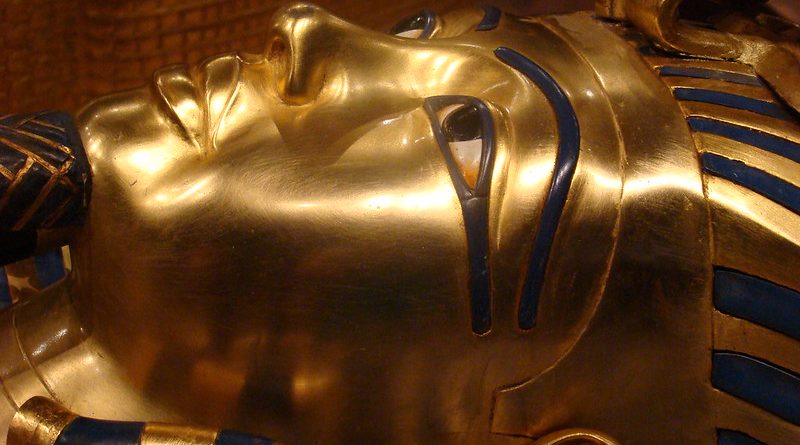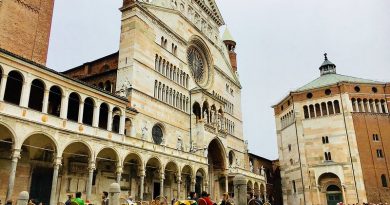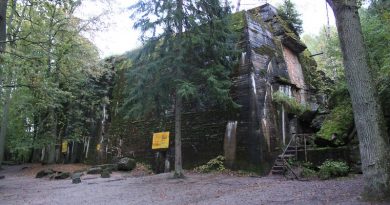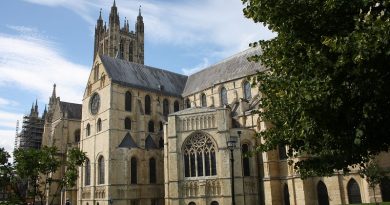Tutankhamen’s Tomb: The Earl and the Archeologist
King Tutankhamun was an Egyptian king from the 18th Dynasty of the New Kingdom (1570-1050 BC),
He’s also known as Tutankhamen which means the living image of god Amun. He is considered to be one of the youngest kings of ancient Egypt as he was only 9 years old when he took Egypt’s throne after the death of his father Akhenaten. He died only ten years later at the age of 19.
He ruled Egypt in a transitory period after his father tried to enforce monotheism by uniting multi gods in the one god “Aton” the sun god. His wife was Ankhesenpaaten and was his half-sister from Akhenaten and his queen Nefertiti.
The child pharaoh Tutankhamun was made famous when his tomb was discovered in the Valley of the Kings by Briitish archaeologist , Howard Carter at end of 1922 .
A young water boy stumbled on a stone that appeared to be the top of a flight of steps cut into the bedrock . After clearing the debris and starting a slow careful excavation, a sunken staircase was discovered leading to a mud-plastered doorway which carried the royal seals of Tutankhamun.
In February 1923, the tomb was opened for the first time and more than 5,000 items were found which Carter took 10 years to fully document . They included a magical golden face mask, the inner coffin of three Sarcophagus made of 450 pounds of solid gold, a dagger made from a fallen meteorite, archery bow, and a golden chariot.
Carter had been funded by British aristocrat , George Herbert , the 5th Earl of Carnarvon .
The discovery made headline news around the world and led to a awakening of interest in Egyptology.
The Earl
Lord Carnarvon was a keen motor car driver. In 1903, he suffered a serious motoring accident after which he never fully recovered his health. After a lengthy convalescence, his doctors advised that he winter out of England, and from then on he and Lady Carnarvon often spent their winters in Egypt.
Here, he became an enthusiastic amateur Egyptologist, and also bought Egyptian antiquities for his collection in England.

Lord Carnarvon, his daughter Lady Evelyn Herbert and Howard Carter at the top of the steps leading to the newly discovered tomb of Tutankhamun, November 1922.
In 1907, Lord Carnarvon undertook to sponsor the excavation of nobles’ tombs and employed Howard Carter to undertake the work, on the recommendation of Gaston Maspero, director of the Egyptian Antiquities Department. In 1912, Carnarvon published Five Years’ Exploration at Thebes, co-written with Carter, describing their excavations.
In 1914, Lord Carnarvon received the concession to dig in the Valley of the Kings .Carter again led the work, undertaking a systematic search of the Valley for any tombs missed by previous expeditions, in particular that of the Pharaoh Tutankhamun.
Excavations were interrupted during the First World War, but resumed in late 1917.By 1922, little of significance had been found and Lord Carnarvon decided this would be the final year he would fund the work.However, in November 1922, Carter was able to send a telegram to Lord Carnarvon, in England, saying: “At last we have made wonderful discovery in Valley; a magnificent tomb with seals intact”.
Lord Carnarvon, accompanied by his daughter Lady Evelyn Herbert, returned to Egypt, arriving at Luxor .Both were present the next day when the full extent of the stairway to the tomb was cleared and a seal containing Tutankhamun’s cartouche found on the outer doorway. This door was removed and the rubble filled corridor behind cleared, revealing the door of the tomb itself.
Carnarvon was also present when, on 26 November, Carter made a tiny breach in the top left hand corner of this doorway, enabling him to peer in by the light of a candle. When Carnarvon asked, “Can you see anything?” Carter replied “Yes, wonderful things!”.
The tomb was then secured, to be entered in the presence of an official of the Egyptian Department of Antiquities the next day. However that night, Carter, his assistant Arthur Callender, Carnarvon and Lady Evelyn apparently made an unauthorised visit, becoming the first people in modern times to enter the tomb.
The next morning, 27 November, saw an inspection of the tomb in the presence of an Egyptian official. Eiecyric lighting was rigged up ,illuminating a vast haul of items, including gilded couches, chests, thrones, and shrines. They also saw evidence of two further chambers, including the sealed doorway to the inner burial chamber, guarded by two life-size statues of Tutankhamun. In spite of evidence of break-ins in ancient times, the tomb was virtually intact, and would ultimately be found to contain over 5,000 items.
On 29 November, the tomb was officially opened in the presence of a number of invited dignitaries and Egyptian officials.
Lord Carnarvon travelled to England in December 1922, returning in January 1923 to be present at the official opening of the inner burial chamber on 16 February.
Before the opening Carnarvon had sold the exclusive newspaper rights to report the excavation to The Times.
Towards the end of February, a rift with Carter, probably caused by a disagreement on how to manage the supervising Egyptian authorities, temporarily closed excavation. Work recommenced in early March .This was to be Lord Carnarvon’s last significant involvement in the excavation project, he falling seriously ill shortly afterwards.
Later that month Lord Carnarvon contracted blood poisoning while staying in Luxor near the tomb site. He died in Cairo on 5 April 1923. Lady Carnarvon retained her late husband’s concession in the Valley of the Kings, allowing Carter to continue his work.
Carnarvon is buried at the The Carnarvon family estate, Highclere Castle, which was the location for the filming of Downton Abbey.
The 8th Earl has created an exhibition at the castle documenting the Tutankhamun excavation by his great grandfather.
The archaeologist
Carter began work for Lord Carnarvon in 1907 .Carter soon developed a good working relationship with his patron, with Lady Burghclere, Carnarvon’s sister, observing that “for the next sixteen years the two men worked together with varying fortune, yet ever united not more by their common aim than by their mutual regard and affection”.
Carter’s meticulous assessing and cataloguing of the thousands of objects in the tomb took nearly ten years, most being moved to the Egyptian Museum in Cairo. The Egyptian authorities agreed that Carter should complete the tomb’s clearance.This continued until 1929, with some final work lasting until February 1932
Despite the significance of his archaeological find, Carter received no honour from the British government. However, in 1926, he received the Order of the Nile, third class, from King Fuad I of Egypt He was also awarded an honorary degree of Doctor of Science by Yale University and honorary membership in the Real Academia de la Historia of Madrid, Spain.
Carter wrote a number of books on Egyptology during his career,including Five Years’ Exploration at Thebes, co-written with Lord Carnarvon in 1912, describing their early excavations, and a three-volume popular account of the discovery and excavation of Tutankhamun’s tomb. He also delivered a series of illustrated lectures on the excavation, including a 1924 tour of Britain, France, Spain and the United States. Those in New York and other US cities were attended by large and enthusiastic audiences, sparking American Egyptomania,with President Coolidge requesting a private lecture.
Carter died at his London flat next to the Royal Albert Hall, in March 1939, aged 64 . He was buried in Putney Vale Cemetery in London with nine people attending his funeral.
His love for Egypt remained strong; the epitaph on his gravestone reads: “May your spirit live, may you spend millions of years, you who love Thebes, sitting with your face to the north wind, your eyes beholding happiness”, a quotation taken from the Wishing Cup of Tutankhamun, and “O night, spread thy wings over me as the imperishable stars”.




